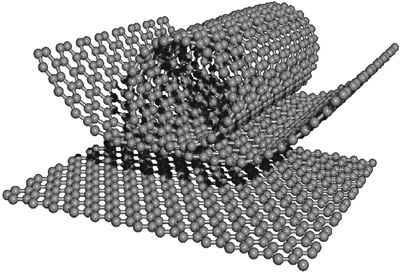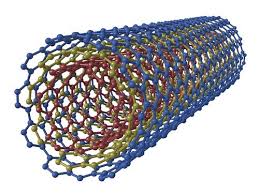(Structure and evolution of monolayer and multilayer chiral angle) CNT carbon nanotubes and CNTs (based on nano-microelectronics) Educational-Research Ph.D.
Researcher and author: PhD student : Afshin Rashid
Note: layers of nanotubes can behave like a metal and electrically angles are done. Restructuring and building in them can display semiconductor properties. Or is leading , for example, minor changes can have on the winding tube from a metal to a semiconductor with a big gap.
Carbon nanotubes are hollow cylinders made of carbon atoms in a hexagonal structure. Two common structures of zigzag and armchair with multiple geometrical and behavioral characteristics are studied to evaluate the influence of structure type on mechanical properties changes, the most important of which is the modulus of elasticity. The two high-performance structures in the present study are modeled using finite element method in Mark's analysis software and the effect of changing the appearance of carbon nanotube structure on its modulus of elasticity has been studied. The behavior of covalent bonds between carbon atoms is also assumed by bending elements with a modulus of elasticity and a specified Poisson coefficient and applying a net tensile load to its upper surface to calculate the modulus of elasticity of the structures under study. Studies show that the armchair structure has a higher modulus of elasticity than the zigzag specimens.
Zigzag specimens always tend to increase their modulus of elasticity and reach the corresponding value corresponding to the ideal Armchair structure. The direction of rolling up (rolling or chiral vector) of the graphene layers determines the electrical properties of the nanotubes. Chirality describes the angle of the carbon nanotube hexagonal lattice. Not New pipes seat - so called because of the shape of the edge of their seats like - have the same chiral indices are full to guide them are much desired. They are not unlike zigzag nanotubes , which may be semiconductors. Converting a graphene sheet to 30 degrees, the nanotube changes from chair to chair to large or zigzag or vice versa.





